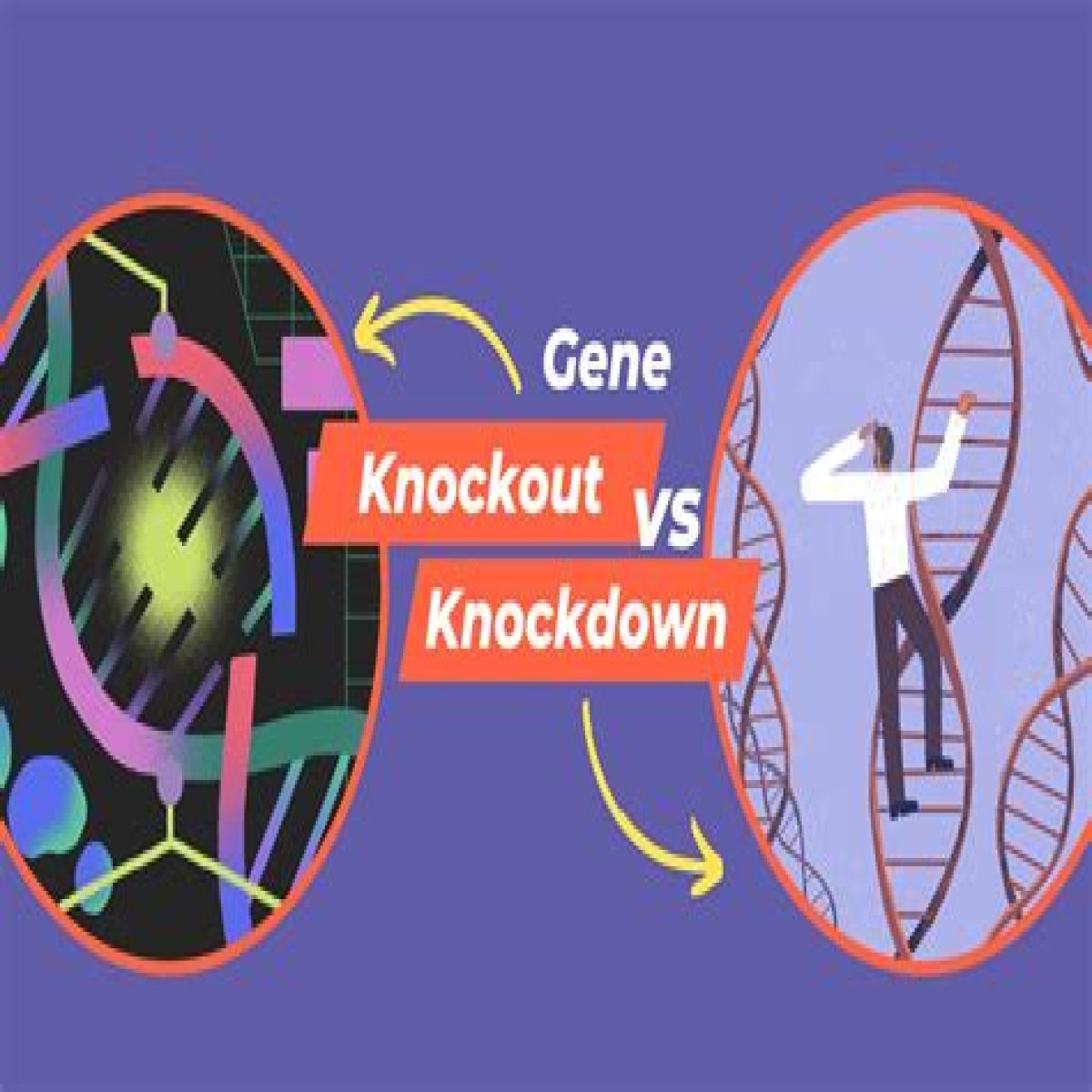Gene knock-down is an innovative technique that has transformed the landscape of genetic research, enabling scientists to study the function of specific genes by reducing their expression levels. This powerful tool allows researchers to investigate the roles of genes in various biological processes and diseases, paving the way for new therapeutic strategies. As we delve into the intricacies of gene knock-down, we uncover its significance in modern science and its potential applications in medicine.
At its core, gene knock-down involves the use of specific molecules, such as small interfering RNA (siRNA) or short hairpin RNA (shRNA), to inhibit gene expression. By selectively silencing genes, scientists can observe the effects on cellular behavior and identify the pathways that contribute to disease progression. This technique has opened new avenues for understanding complex genetic interactions and has become an essential component of functional genomics.
The implications of gene knock-down extend far beyond the laboratory. As researchers continue to unravel the complexities of gene regulation and expression, they are uncovering potential targets for drug development and novel therapies. With the power to manipulate gene expression, gene knock-down stands at the forefront of precision medicine, offering hope for more effective treatments for a wide range of genetic disorders.
What is Gene Knock-Down?
Gene knock-down is a molecular biology technique used to reduce the expression of specific genes in cells. By employing RNA interference (RNAi) mechanisms, scientists can achieve targeted silencing of genes, allowing for the study of their functions and contributions to cellular processes.
How Does Gene Knock-Down Work?
The process of gene knock-down typically involves the introduction of small RNA molecules, such as siRNA or shRNA, into the target cells. These molecules bind to the messenger RNA (mRNA) produced by the gene of interest, leading to its degradation or preventing its translation into protein. This reduction in gene expression provides insights into the gene's role in various biological functions.
What Are the Applications of Gene Knock-Down?
Gene knock-down has a wide range of applications in research and medicine. Some notable applications include:
- Studying gene function and regulation
- Identifying potential drug targets for disease treatment
- Understanding disease mechanisms and pathways
- Developing new therapeutic strategies for cancer and genetic disorders
What Are the Advantages of Gene Knock-Down?
The use of gene knock-down techniques offers several advantages in scientific research:
- High specificity: Targeted gene silencing allows for precise study of individual genes.
- Reproducibility: Results obtained from gene knock-down experiments can be consistently reproduced.
- Versatility: Gene knock-down can be applied to various cell types and organisms, making it a valuable tool across different fields of research.
Are There Any Limitations to Gene Knock-Down Techniques?
While gene knock-down is a powerful tool, it does have some limitations:
- Off-target effects: There is a possibility of unintended gene silencing, which may affect the interpretation of results.
- Transient effects: The effects of gene knock-down may not be permanent, requiring careful experimental design.
- Delivery challenges: Efficient delivery of RNA molecules into target cells can be challenging, particularly in vivo.
How is Gene Knock-Down Different from Gene Knock-Out?
Gene knock-down and gene knock-out are both techniques used to study gene function, but they differ in their approach. Gene knock-out involves permanently disabling a gene through genetic engineering, while gene knock-down temporarily reduces gene expression. Consequently, gene knock-down allows for the exploration of gene function in a more dynamic manner.
What is the Future of Gene Knock-Down Research?
The future of gene knock-down research looks promising, with advancements in technology and methodology driving progress. As researchers continue to refine gene silencing techniques, we can expect more precise and efficient approaches to gene manipulation. This will likely lead to breakthroughs in understanding diseases, developing targeted therapies, and even personalized medicine.
Conclusion: The Impact of Gene Knock-Down on Science and Medicine
In conclusion, gene knock-down represents a significant advancement in genetic research, providing invaluable insights into gene function and regulation. With its wide range of applications in various fields, gene knock-down is set to play a crucial role in the future of medicine, offering hope for new therapies for complex diseases. As we continue to explore the nuances of this powerful technique, the potential for groundbreaking discoveries remains vast and exciting.
Has Mr Tumble Been Arrested? The Truth Behind The RumorsUnraveling The Mystery: Why Did Maddie Leave 911?Unveiling The Mystique Of Jackerman: A Journey Through Life And Legacy
Difference between Gene Knockout and Knockdown Causes, Facts & Key
Regenbogen Charles Keasing Amüsieren sirna knockdown mechanism
Difference between Gene Knockout and Knockdown Causes, Facts & Key
